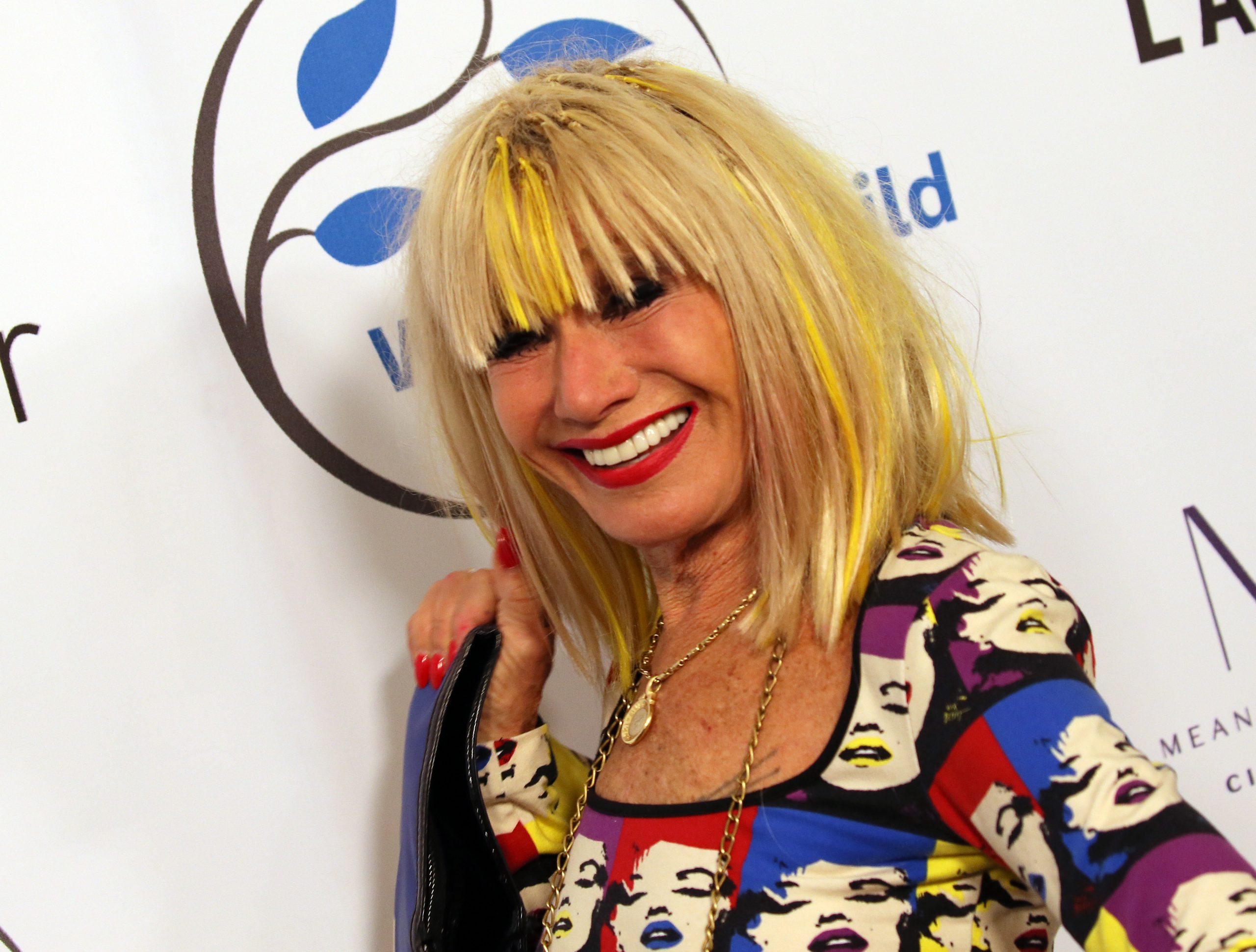Recognizing Early Signs of Breast Cancer
- Fashion designer Betsey Johnson, 81, says she discovered early signs of breast cancer after having her breast implants removed only to find a small lump within the scar tissue.
- She underwent treatment, which included a lumpectomy (removal of the tumor and surrounding tissues) and a month of radiation, helping her reach remission.
- Questions surrounding whether breast implants cause cancer have lingered for years. However, following a report released by the U.S. Food and Drug Administration (FDA) report on the issue, some SurvivorNet experts believe that although “cancers found in the implant capsules is concerning and further investigation is needed,” there’s still no significant need to sound the alarm.
- The FDA’s report last year drew attention to a small number of cases of breast implants linked to squamous cell carcinoma – a type of skin cancer – and lymphoma – a type of cancer that starts in the lymphatic system.
- Breast cancer implants can make it harder for mammography imaging to present breast tissue. However, by alerting the technologist on hand, extra imaging can be performed.
- The medical community has a broad consensus that women have annual mammograms between the ages of 45 and 54. However, if you have a higher risk for breast cancer due to a family history or a genetic mutation, you should consider screening at age 40.
Fashion designer Betsey Johnson, 81, is known for sexy silhouettes and hippy designs reminiscent of the ‘70s. She was a trailblazer in women’s fashion and is a staunch advocate for breast cancer awareness.
Johnson, a breast cancer survivor, says her experience with the cancer impacting millions of women came about after waking up with “one boob.”
Read More
“It is not possible to conclude from this preliminary data that the cancers are definitively linked to breast implants,” Doctors Sarah Cate and Jordan Jacobs previously told SurvivorNet.
Recently, the FDA recently advised that the removal of textured breast implants to prevent cancer is “not recommended” for asymptomatic patients.
The FDA issued its statement in response to an expert panel formed by the American Association of Plastic Surgeons (AAPS) conducting a review on breast implant-associated anaplastic large cell lymphoma (BIA-ALCL), which was published in the Plastic and Reconstructive Surgery several months ago.
“Given that the occurrence of BIA-ALCL is uncommon, prophylactic removal of textured implants is not recommended in asymptomatic patients. However, individual patients should discuss possible benefits and risks of removal with their health care providers to make an informed decision about their health.”
The American Cancer Society says breast implants involving saline and silicone can make it harder for mammography imaging to see breast tissue during screening. However, if you tell the technologist you have implants, they will perform extra imaging. In some rare cases, during mammogram screening, the implants may experience a rupture.

Betsey’s Breast Cancer Journey
“I go to sleep with two boobs. I wake up with one boob,” Johnson continued.
The famed fashion designer went to the doctor to learn why her breast implant seemingly failed her. While at the doctor, she decided to remove the other implant and “get back to normal.”
After having the implant removed, she observed the scars underneath her breast and noticed among the scar tissue a small lump the size of a pea.
“I was like, ‘What is this hard-as-a-rock pea going on there?’ Which I never would have discovered if the implant hadn’t deflated,” Johnson explained to People Magazine.

She returned to the doctor, who recommended further testing.
“I came from my doctor’s appointment where I find out, yes, I do have cancer,” Johnson said.
She was diagnosed with breast cancer in 2000, although specifics on the type of breast cancer remain unclear. She underwent a lumpectomy (removal of the tumor and surrounding tissues) and a month’s worth of radiation for treatment.
WATCH: Choosing between a lumpectomy or mastectomy.
A lumpectomy is a surgery to remove a cancer or abnormal tissue from the breast. It’s also known as breast-conserving surgery because, unlike mastectomy, only the tumor and some of the surrounding tissue are removed.
Dr. Sarah Cate is the Chief of Breast Surgery at Stamford Hospital. She tells SurvivorNet that breast surgeons will help patients make the right decision about having a lumpectomy or a mastectomy.
“Mastectomy has very specific indications,” Dr. Cate said.
“Some of the things that would predicate a mastectomy are things like a large tumor size to breast ratio, or having cancer in more than one area of the breast, or things like a genetic mutation,” Dr. Cate added.
Radiation therapy for breast cancer involves high-energy rays aimed at cancer cells to kill them. This treatment method is often employed after surgery to help reduce the chances of the cancer returning. Many women undergo radiation as part of their treatment, especially if they opt for a lumpectomy instead of a mastectomy.
Expert Resources on Breast Cancer Screening
- Earlier Mammograms for Black Women May Reduce Breast Cancer Mortality Disparity Rates By 57%; How to Screen for this Disease
- I Have Dense Breasts. Do I Need a 3D Mammogram?
- Millions of Women With Dense Breasts — A New Congressional Law — What You Need to Know
- When You’re Getting a Mammogram, Ask About Dense Breasts
She Kept It a Secret
Johnson kept her breast cancer diagnosis private for months.
“I didn’t tell anyone from a fashion show in February till the next fashion show week, which was in September. The fashion industry supports breast cancer to the hilt,” Johnson explained.
During that September event, she went public about her cancer journey.
She explained to a packed audience that for six months, she’d been battling breast cancer. Her vulnerability granted her “amazing support at the opening of fashion show week.”
WATCH: Sharing a Diagnosis
“Patients who have just been diagnosed with cancer sometimes wonder how they are going to handle the diagnosis of the cancer in social situations,” psychiatrist Dr. Lori Plutchik explains.
Questions like “How much information should they share and with whom should they share the information?” are things Plutchik says patients take into consideration.
Dr. Plutchik explains, “There is no one right way to handle this diagnosis. People should do what feels right to them.”
Questions like “How much information should they share and with whom should they share the information?” are things Plutchik says patients take into consideration.
Dr. Plutchik explains, “There is no one right way to handle this diagnosis. People should do what feels right to them.”
A cancer journey can last months to years, which means cancer warriors may be experiencing a lot of uncertainty until they fully understand where their health stands. This uncertainty can influence when a cancer patient is ready to share their diagnosis, Dr. Plutchik further explained.
Dr. Plutchik stresses that those close to a person going through cancer should be respectful of their wishes when it comes to disclosing their diagnosis and seeking support.
Betsey Used Her Experience to Support Other Women
Betsey has become an advocate for supporting early detection and mammograms.
She says her daughter previously underwent a double mastectomy (removal of both breasts), and other women who underwent a prophylactic mastectomy (preventative mastectomy) because they were carriers of the BRCA gene mutation, which increases your risk for breast and ovarian cancer.
“Get your mammogram, get your mammogram, get your mammy,” Johnson encouraged.
She adds that in addition to staying current with screenings if you happen to be diagnosed with cancer, focusing on your mental health is just as important as your physical treatment.
“I think being optimistic is 98% of the gig. I mean, you can fight, fight, fight, but your mind’s got to be positive or you get nowhere,” Johnson said.
When to Screen for Breast Cancer
The medical community has a broad consensus that women have annual mammograms between the ages of 45 and 54. However, an independent panel of experts called the U.S. Preventive Services Task Force (USPSTF) is saying that women should now start getting mammograms every other year at the age of 40, suggesting that this lowered the age for breast cancer screening could save 19% more lives.
The American Cancer Society recommends getting a mammogram every other year for women 55 and older. However, women in this age group who want added reassurance can still get annual mammograms.
WATCH: Mammograms are still the best tool for detecting breast cancer.
Women with a strong family history of breast cancer, a genetic mutation known to increase the risk of breast cancer, such as a BRCA gene mutation, or a medical history, including chest radiation therapy before the age of 30, are considered at higher risk for breast cancer.
Experiencing menstruation at an early age (before 12) or having dense breasts can also put you into a high-risk category. If you are at a higher risk for developing breast cancer, you should begin screening earlier.
Learn more about SurvivorNet's rigorous medical review process.

